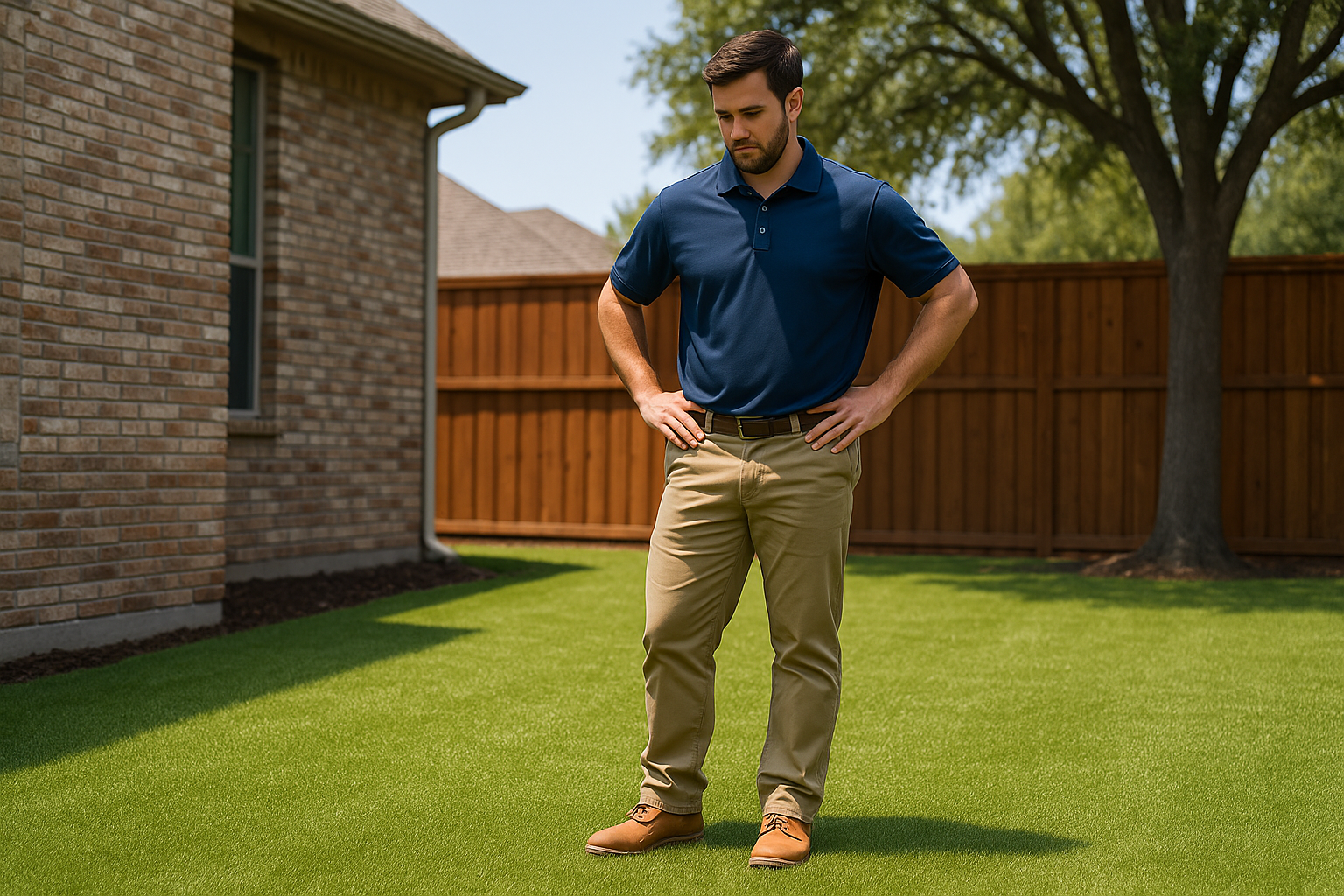If you have artificial grass in your yard, you know it’s low-maintenance—but not no-maintenance. Over time, dirt, debris, pet waste, and bacteria can build up, leaving your turf looking and smelling less than ideal. That’s where professional turf cleaning comes in.
In this article, we’ll walk you through what to expect from a professional artificial turf cleaning service, what makes it different from a DIY rinse, and why homeowners in Dallas-Fort Worth are turning to experts to protect their investment.
Why Professional Turf Cleaning Matters
Artificial turf is durable, but it’s still exposed to the elements, foot traffic, and—if you have pets—frequent use as a bathroom. While you can rinse your turf and spot clean problem areas, a deep clean requires professional tools and know-how.
A professional cleaning service goes beyond the basics to:
- Remove odor-causing bacteria
- Restore the turf’s color and bounce
- Improve drainage and longevity
- Eliminate allergens, dust, and debris
What’s Included in a Turf Cleaning Service?
What’s Included in a Turf Cleaning Service?
Each turf cleaning company may offer different packages, but here’s what’s typically included in a high-quality service like ours:
1) Debris Removal
Technicians start by clearing leaves, branches, pet waste, and surface debris using turf-safe tools.
2) Turf Grooming
The turf is brushed using a power broom or stiff bristle rake to lift flattened blades and remove matted fibers. This helps restore the turf’s upright appearance.
3)Enzyme Treatment for Odor Removal
A non-toxic, enzyme-based cleaner is applied to neutralize pet urine, bacteria, and other odor sources. Enzymes break down organic material safely and effectively.
4) Antimicrobial and Deodorizing Rinse
After the enzyme treatment, a deodorizing rinse is used to leave the turf smelling clean and fresh. This is especially important for households with dogs.
5) Infill Inspection and Top-Off
The infill (such as silica sand or Zeolite) is inspected for odor, compaction, and level. If needed, a deodorizing infill is added to absorb odors and support turf blades.
6) Drainage Check
Professionals ensure water is draining properly through the turf backing. Poor drainage can lead to bacteria growth and turf damage.
7) Final Rinse and Groom
To finish, the turf is rinsed again and brushed to give it a clean, fluffed, and even appearance.
How Often Should You Schedule a Turf Cleaning?
The frequency depends on usage:
Usage Level
Low Traffic (No Pets)
Moderate Use
Pets & High Use
Recommended Frequency
Every 6-12 Months
Every 3-6 Months
Every 1-3 Months
For best results, combine regular DIY maintenance with periodic professional cleanings
DIY vs. Professional Turf Cleaning
Feature
- Surface Rinsing
- Deep Treatment
- Power Brushing
- Odor Elimination
- Inspect/Refresh Infill
- Time/Effort
DIY
- Yes
- Nope
- Nope
- Weak
- Nope
- High
Pro
- Yes
- Yes
- Yes
- Effective
- Yes
- Low
While homeowners can handle light maintenance, pros have the equipment and expertise to handle tough odors and keep turf in top condition.
Book a Turf Cleaning in Dallas-Fort Worth
At Texas Turf Cleaning, we specialize in professional artificial turf cleaning services that are safe for pets, kids, and all turf types. Whether your lawn just needs a refresh or you’re dealing with serious pet odor, we’ve got you covered.
Contact us today to get a free quote or schedule your next service.
Final Thoughts
A professional turf cleaning service does more than just rinse your lawn—it revives your turf from the ground up. With proper care, your artificial grass will stay cleaner, safer, and longer-lasting.
Don’t wait until it smells. Invest in regular cleanings and enjoy a fresh, beautiful lawn all year long.
Contact us today to get a free quote or schedule your next service.




